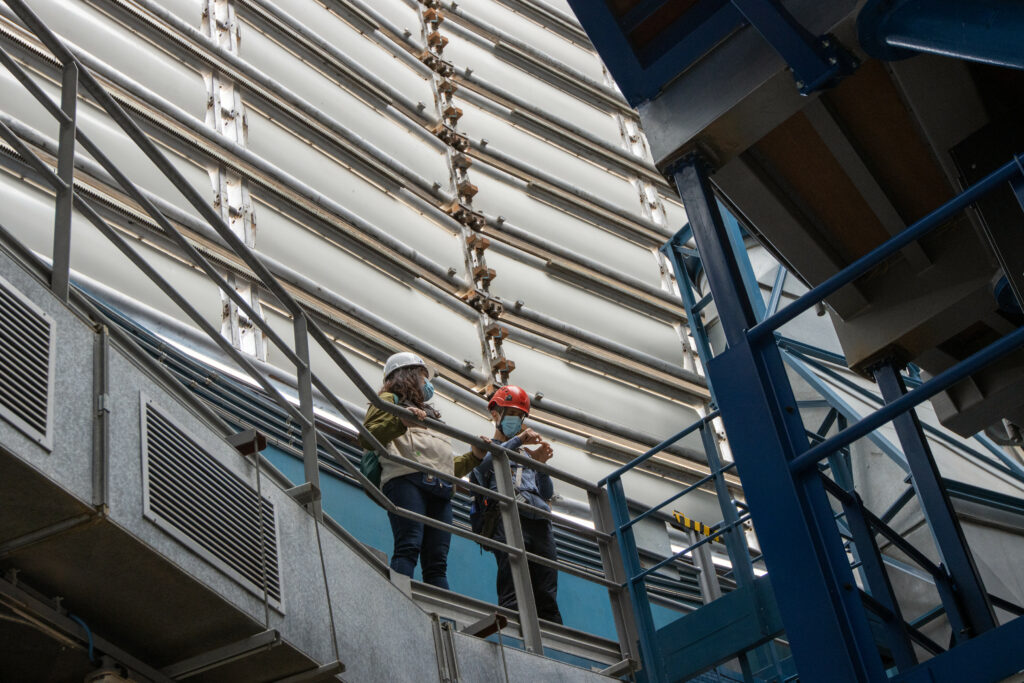The presented image was taken inside one of the towers of the ESO’s Very Large Telescope (VLT) — the largest optical observatory on Earth by total mirror area. The image shows a system of windscreens having a height of about half a meter. They play a vital role in the operation of VLT.

The towers and domes of the main telescopes of the VLT complex perform a key task in protecting their fillings from external factors: wind, rain, sand and dust. But these huge structures can create problems for astronomers. The air inside the towers can swirl, creating turbulent flows (vaguely similar to those that cause the plane to shake in flight). They, in turn, are able to blur the images they receive.
To minimize the effects of turbulence, the shape of the dome of the telescopes was subjected to thorough testing in wind tunnels. And inside the towers, an automatic temperature and air flow control system is installed, which makes it even more reliable to control turbulence. Silvery windscreens, like those shown in the photo, slide in a horizontal plane, opening and closing when the telescope tube moves up and down and blocking the lower part of the dome slit, through which light enters the telescope at night. Thus, it is possible to achieve an undisturbed flow of air around the telescope and its protection from the wind.
In addition, the dome is equipped with a system of windows and shutters (blinds) around the perimeter, which automatically open and close during the night. This ensures the continuous operation of VLT with the highest possible image quality and the possibility of obtaining perfect images of space objects.
You can also read about how the ALMA radio telescope complex photographed the cosmic web.
According to https://www.eso.org
Follow us on Twitter to get the most interesting space news in time
https://twitter.com/ust_magazine

